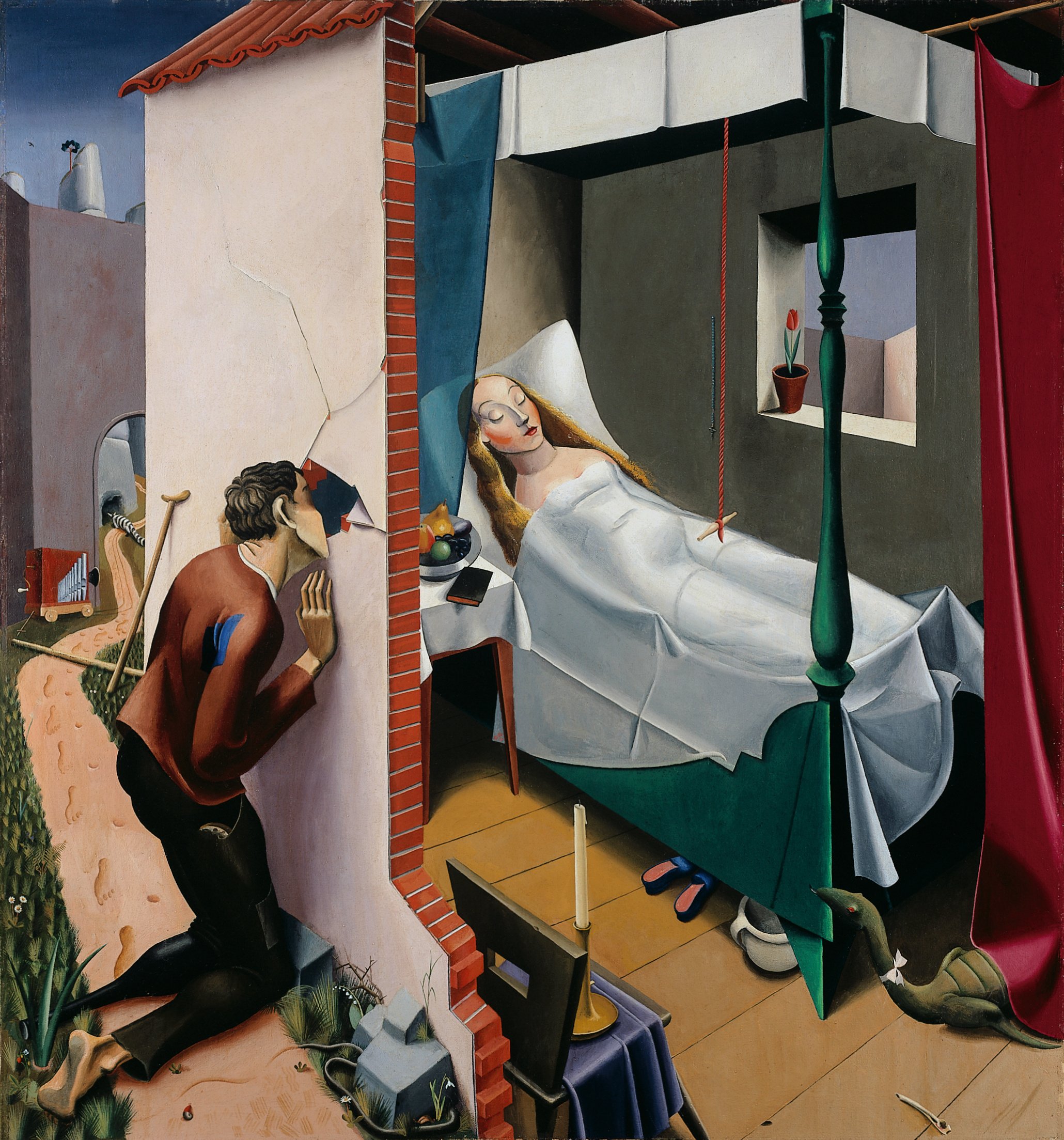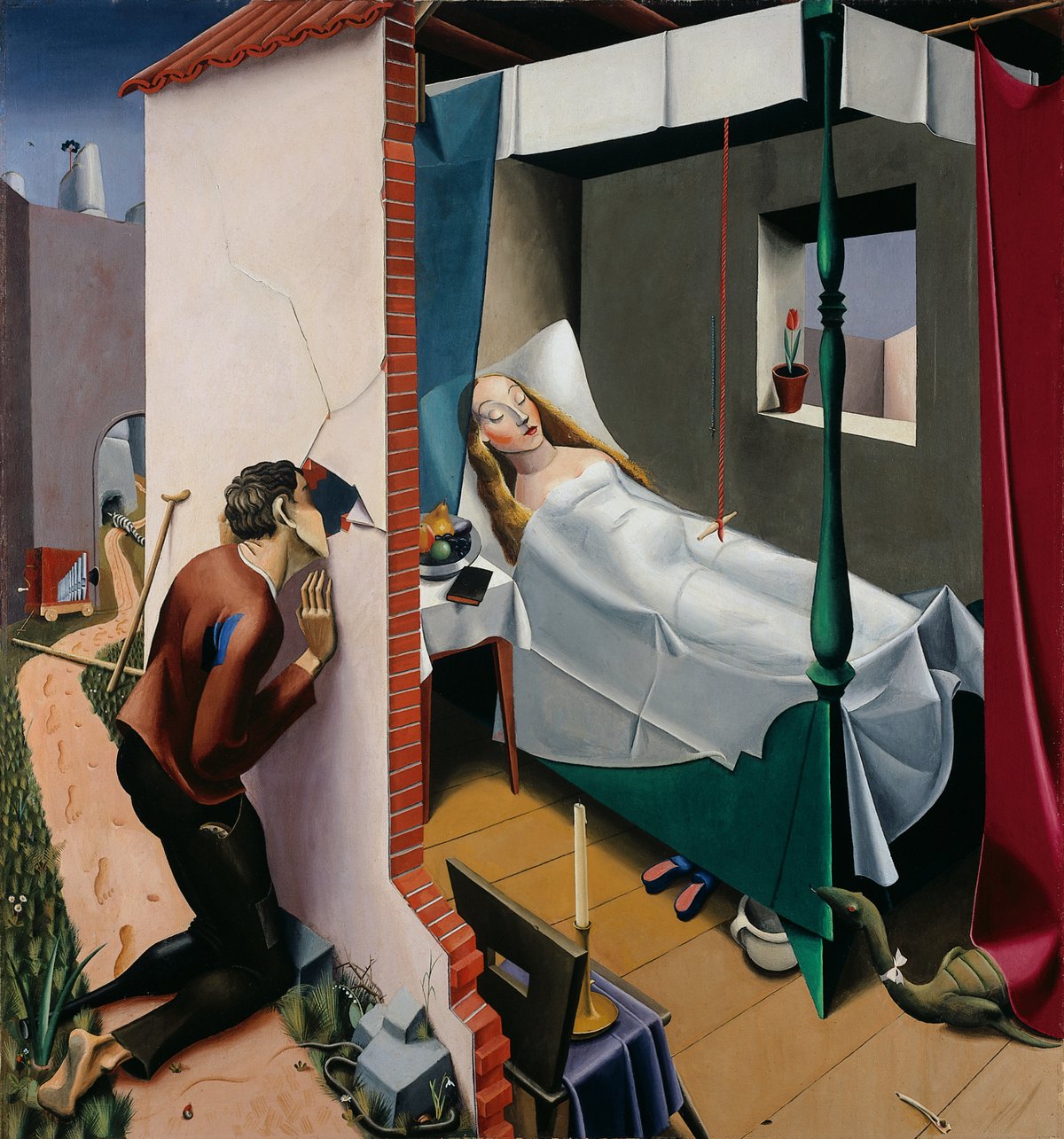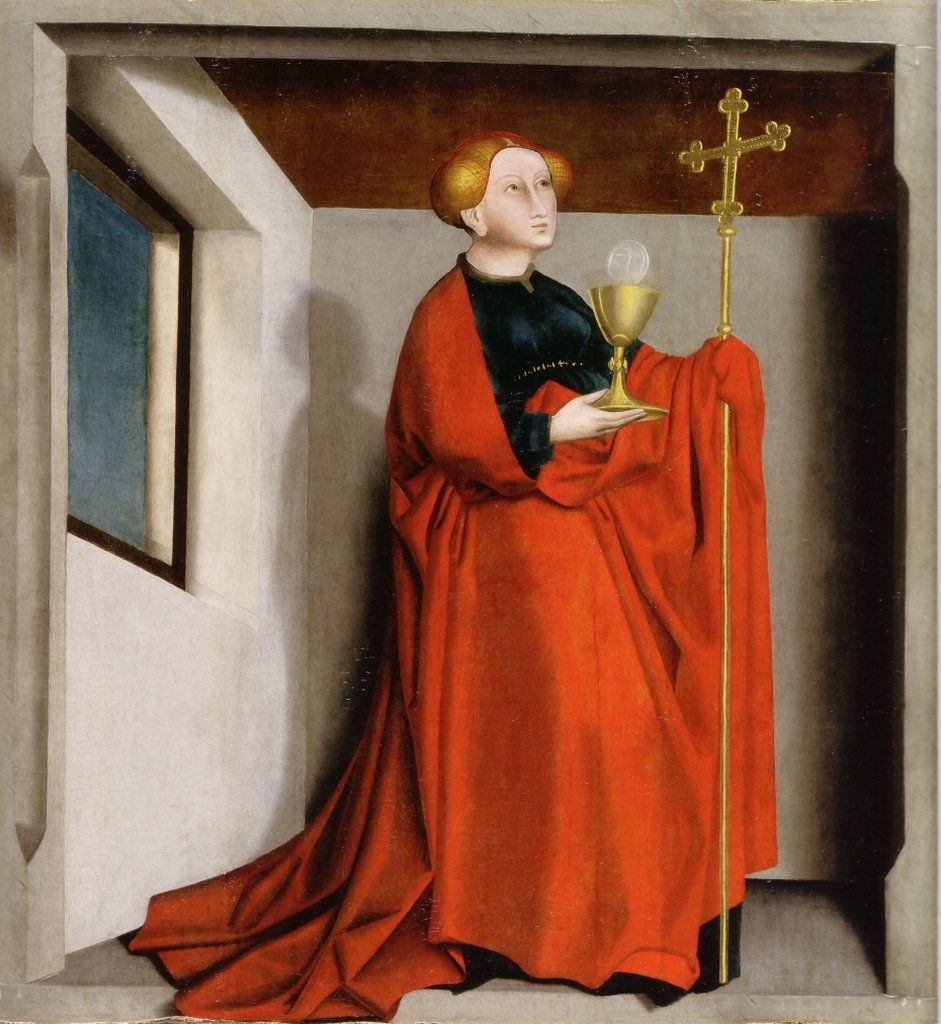Niklaus Stoecklin
Fantasy, 1920–1921

Niklaus Stoecklin
Fantasy, 1920-1921
Kunst Museum Winterthur, Schenkung der Erben von Emma Berta Nager-Reinhart, 1966
Foto: Hans Humm, Zürich
After the First World War, New Objectivity appeared as a counter-movement to wild Expressionism. As the name suggests, this is a very sober style. Things are depicted in a very ‹matter-of-fact› way. Niklaus Stoecklin from Basel was one of the first artists to revisit painterly traditions. If we look at his early major work, Fantasy, it quickly becomes clear why the movement also had another name, that of ‹Magical Realism›. For despite the clarity of the design and the meticulous painting style, something invisible, even mysterious, always resonates. This painting is sure to raise a few questions for you too.
What do we see? – A path winds its way through a rocky wilderness, past a stone tower and striped mythical creatures. The protagonist, a one-legged organ grinder, walks along it, now kneeling, as he spies through a gap in the wall into a room. In this room, a young woman lies in bed sleeping. If we interpret the organ grinder as the artist's alter ego, the arduous path that lies behind him can be understood as the painter's search for his artistic destiny. His intense gaze supports this thesis, whereby the desirous look allows him to scan with his eyes, but he is denied actual access – a beautiful, but also sad metaphor for painting.
The young woman in bed looks like Snow White or Sleeping Beauty under her white sheet. The fairytale-like quality of this scene is emphasised by details, not least the charming dragon, which normally appears as an animalistic antithesis to the virgin. In this case, the erotic threat seems to emanate more from the voyeuristic intruder. It finds its counterpart in the glowing red cord, which is aimed precisely at the woman’s lap. Other elements, such as the snake in front of the house, the candle and the chamber pot, create an intricate and at the same time unstable balance between chastity and eroticism, between intimacy and desire, piety and death.

Niklaus Stoecklin
Fantasy, 1920-1921
Kunst Museum Winterthur, Schenkung der Erben von Emma Berta Nager-Reinhart, 1966
Foto: Hans Humm, Zürich
These juxtapositions are echoed in the overall composition. The picture is bisected in the centre and divided into an interior and exterior space by the strip of wall. Stoecklin orientated himself here on late Gothic painting, which provided inspiration for many artists of New Objectivity. Konrad Witz, who is well represented in the Basel Art Museum, was an important influence, because box rooms play a central role in his work. Just like Witz, Stoecklin explores space in its complex meaning. This is because space manifests the typical questions that artists of the New Objectivity asked themselves, such as reflecting on inside and outside, and ultimately on illusion and reality. In general, space serves as an existential metaphor for a specific being-in-the-world of man, or specifically of the artist, if we now want to read the one-legged man as a self-portrayal. But if we look closely at the tracks that our protagonist has left on the path, we realise that left and right are reversed – so has he set us on the wrong track?

Konrad Witz, Ecclesia, um 1435
Mirror of human salvation altarpiece, outer side
Kunstmuseum Basel


